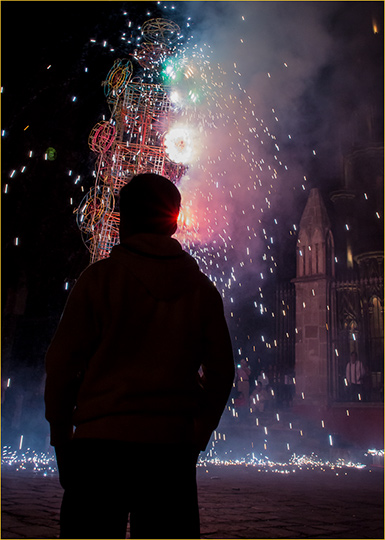This article serves as the conclusion of
my Sony NEX-7 Rolling Review
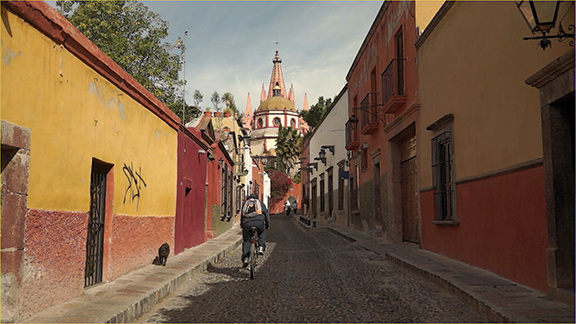
Frame Capture From a NEX-7 1080P Video File
In this discussion of the video capabilities of the NEX-7 I am going to assume a certain familarity with the jargon of film production. In a shameless plug I’m also going to recommend that if you are not already familiar with our video tutorialCinematography for Photographers then I strongly urge you to consider purchasing it. It’s a quick and relatively painless way to get up to speed on the language and techniques of shooting video with stills cameras.
No Longer Crippled
The NEX-7 (and NEX-5n) are interesting to anyone wanting to shoot video because unlike most video-capable DSLS and CSCs there are almost no restrictions on what “mode” you need to be in to shoot video. Indeed, with the NEX cameras there isn’t a video mode. If you press the red video button (which as we’ve seen you’ll be doing a lot with the NEX-7, even though most of the time it will be unintentional) the camera will begin shooting video in whatever mode you are currently in; Program, Shutter Priority, Aperture Priority or Manual.
Importantly, at long last camera makers (or at least Sony) are no longer crippling the video capabilities of their stills cameras. Anyone that has been paying attention to developments over the past few years now knows that the current crop of CSCs and DSLRs can be very handy video cameras with decent image quality – at least when it comes to many aspects of image quality. While the Canon 5D MKII has garnered much of the attention, other models are equally capable of quality video imagery. The Panasonic GH2 is particularly highly regarded. Professional cinematographers are now using such cameras to shoot segments of feature films as well as $Million+ TV shows.
Please note though that the above comment is qualified. These cameras can produce quality video, but for the most part they are limited as true film production tools. A great many features which pros take for granted (and need) are missing. But, by adding some accessories and applying good technique these cameras can produce very good quality video, though not truely excellent video.
SideBar
The truth is that all DSLRs and CSCs suffer to one extent or another from rolling shutter, aliasing, and moire. Rolling shutter is caused by the CMOS sensor not exposing the entire frame at once. If there is side to side camera motion during each frame (24 to 60 per second) then the subject will not be in the same place during the top and bottom of the frame. The so-called jello effect. There are reports that various manufacturers are going to introduce sensors with “global” electronic shutters during 2012, which will do away with rolling shutter once and for all.
Aliasing and Moire are caused by the fact that while we like 8MP, 12MP, 18MP and larger sensors on our still cameras, HD video is currently less than 2 Megapixels in size. Your still camera’s large sensor is valued for its shallow depth of field – producing a “filmic look”, but it needs to be scaled down on the fly to 1920 X1080 pixels.
It’s worth noting that the Sony FS100 uses a full raster large sensor, so that no scaling or interpolation is necessary. It uses the same NEX E lens mount as the NEX-7 and 5n, and isthecamera to consider if you’re serious about video using the NEX system.
The Large Sensor

Deep depth of field example. Note lower right street scene.
23mm @ f/11
Other than the fact that a camera like the NEX-7canshoot video, what’s the appeal? It a word, it’s the large sensor. Video cameras typically have very small sensors, similar in size to those in a pocket digicam. This means that while their lenses can be made small and fast, have power zooms, and offer a wide focal range, depth of field is the problem. It’s simply too great. When a camera’s “normal” focal length is 10mm, there is no way to shoot with selective depth of field, even when the lens is used wide open. Almost everything is always in focus, and the wider the coverage the worse it gets.
This may be fine if one is shooting the kids playing in the back yard, a visit to Disneyland, or even a wedding. But for the cinematic look that film makers (even amateurs) want selective depth of field is what’s needed, and this can only be achieved by using a camera with a larger sensor. One of the reasons why the Canon 5D MKII was initially so successful among cinematographers was that its full-frame sensor allowed for very appealing shallow depth of field. An APS-C sized sensor, such as that in the NEX-7, still is large enough that it’s easy to get shallow DOF, especially with slightly longer lenses as well as with fast primes.
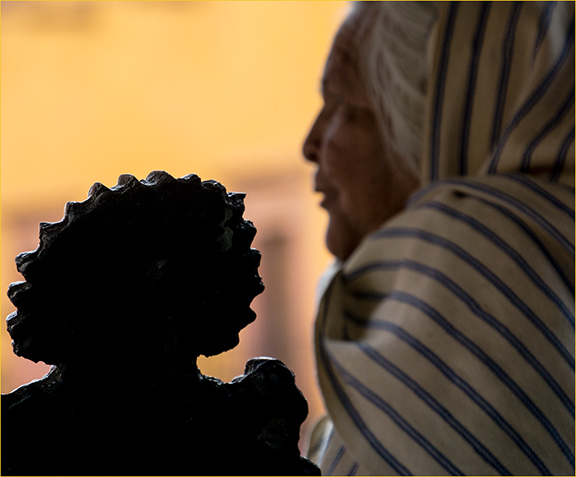
Shallow depth of field example
150mm @ f/6.3
Lenses

Zeiss CP.2 Primes
The new generation of Compact System Cameras (CSCs) such as the NEX-7 are of great appeal to those interested in cinematography because they allow the use of a huge variety of legacy and specialized lenses. With an appropriate adaptor just about any lens ever made can be attached, and though lenses with manual aperture rings are preferred, even Canon and Nikon DSLR glass can be used with appropriate adaptors.
Video makers who shoot “run-and-gun”style, doing news, weddings and some documentary work, don’t mind and even demand zooms, autofocus and the like. But those interested in narrative film making are after shallow DOF, very high image quality, and being able to work in available light whenever possible, which means a large sensor and fast primes or zooms.
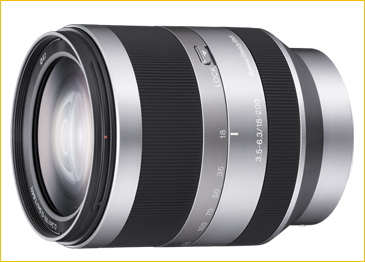
The E mount lens line from Sony is still growing. When it comes to general purpose video the lens of choice is theE 18-200mm. This is the largest and heaviest E lens, but has silent AF and very effective stabilization. This lens is what’s provided with the Sony FS100, which frankly, if you’re serious about video with the NEX system, isthecamera that you should consider.
Incidentally, one advantage of the NEX E mount system using in-lens stabilization is that they do not suffer from the overheating that cameras which use sensor stabilization are prone to (including Sony’s own A mount cameras).
Other Sony lenses which will be of interest to cinematographers are the new50mm f/1.8 OSS(stabilized) andZeiss 24mm f/1.8. Both offer the speed and focal lengths that creative film makers demand.
Of course the Sony LE-A2 adaptor for Sony A mount lenses provides full AF and auto aperture with the broad range of Sony and Zeiss branded A mount lenses.
Carl Zeiss has a range of very high quality so-called compact primes – CP.2 – that, while priced at about $3,900 each, offer superb quality, fast apertures, minimal “breathing” and are now available in Sony E mount. If you own Leica M lenses then these are superb for video as well, though they lack the CP.2’s large focus rings.
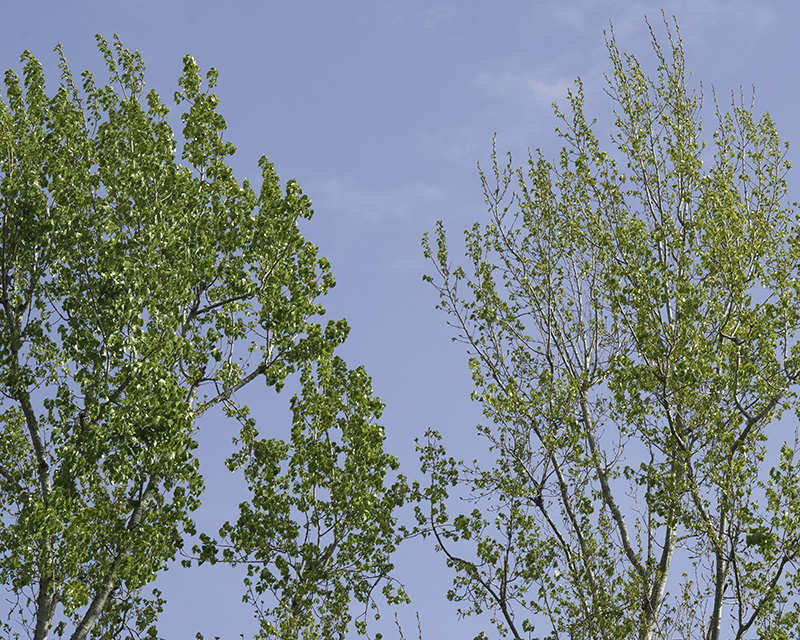
Leica Summilix C Primes
Not to be outdone, Leica has a set of new cinema lenses for large sensor video cameras calledSummilux-C. A set of eight lenses will ste you back US $178,000. To save you doing the math, that’s an average of $22,250 each! And you thought that the Zeiss lenses were expensive.
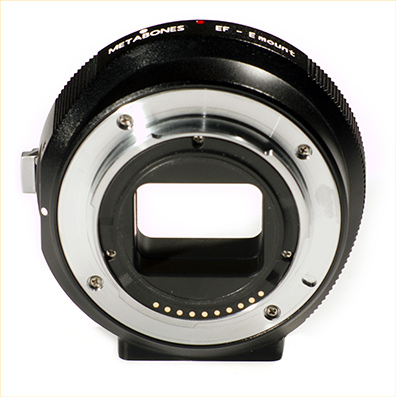
On a more affordable and widely available basis, Canadian company Canurushas just introduced a full-featured Canon EF lens adaptor under theMetabonesbrand, out of Hong Kong. Electronic iris and IS are supported. Even at $399 the first shipment was sold out on day one of sales. It’s not hard to predict that the demand for this adaptor will be huge.
Just as a side note, professional cinematographers almost always rent their cameras. But, many own their own lenses. These are the brushes with which images are drawn.
Other Video Accessories

ECM-ALST1
Two other video accessories from Sony that I would recommend are theECM-ALST1microphone and theCLM-V55 LCDmonitor. The NEX-7 has the usual built-in stereo microphones, but these are subject to camera handling noise and aren’t of terribly high quality. The ALST1 costs about $150 and is a battery-powered dynamic design. It plugs into the NEX-7’s mic jack. It features a Sony locking shoe design, the same as those used on Alpha flash units. The NEX-7 is the first NEX model to feature this connector. The mic comes with a removable foam wind sock and features a rubberized isolation mount as well as 90 deg and 120 deg settings. Short of a separate audio recorder, this is the best audio investment that one can make for the NEX-7. If you’re going to be shooting video with the NEX-7, just get one.

CLM-V55
There are numerous small monitors available from different manufacturers, but one which is a perfect match with the NEX-7 is the Sony CLM-V55. I reviewed theMarshall LCD50in 2010, but the Sony V55 has a lot to recommend it, including a built-in folding shade, smaller size, lighter weight, and the use of standard Sony camera batteries (FM500H). It is available for about $400, or $500 as a kit with battery and charger. It has variable white balance, peaking and a range of other controls, and is usable not just with the NEX-7, but just about any camera that has a live HDMI output.
Good News / Bad News
The bad news is that the NEX-7 does not have a dedicated video mode. To shoot video one simply presses the red button on the camera’s shoulder, just to the right of one’s thumb. The camera then starts to shoot video in whatever mode you currently happen to be shooting stills in. This means that the special needs of filming (such as an appropriate shutter speed for the frame rate selected) will be derived from whatever the camera is currently set to.
The good news is that if you’re in Program mode, the camera is smart enough to realise that a high shutter speed is a bad idea when recording video, even if that’s what the lighting conditions call for. The camera will therefore bias the combination of aperture a shutter speed towards a more appropriate shutter speed for video, and therefore a smaller aperture.
Of course if one wants the most appropriate shutter speed this can be set by putting the camera into Shutter Priority mode, or Manual mode. When shooting at 24FPS, for example, a shutter speed of about 1/50th or 1/60th would be used for “normal” looking motion. But the fly in the ointment is that 1/60 second is usually much too slow when shooting stills. This means that a lot of manual mode changing is necessary if switching back and forth between stills and video, because the camera lacks the ability to record ones preferred settings combination with a “User” setting or two.
Unless you likeSaving Private Ryanstyle jerky video, you must invest in a variable neutral density filter so you can shoot with wide apertures in bright daylight without having to use high shutter speeds. My recommendation is that you buy one of these in the largest size that will fit your lens collection and then buy step-up rings to fit the filter to your various lenses. You should also consider spending the money on high-quality rings, because the inexpensive aluminum ones will inevitably bind and drive you nuts.

Frame Capture From a NEX-7 1080P Video File
Video and Stabilization
When shooting with one of Sony’s E series stabilized lenses it is very important to remember to turn IS off if the lens is tripod mounted. Unlike Canon’s latest IS lenses, for example, Sony’s will “jitter” if there is nothing for them to stabilize against.
Limitations & Suggestions
As mentioned previously, video can be shot with just about setting. But. there are a couple of basic limitations. The minimum shutter speed is a remarkable 1/4 second and the maximum ISO is 3200. While ISO 1600 is of quite reasonable quality, ISO 3200 is noisy. Some of the church interior shots in the sample video below were shot at both 1600 and 3200, and the ones at 3200 jump out at you on close inspection.
Like the NEX-5n (and the highly regarded Panasonic GH2) there is a significant gamma shift when you start to record video. Shadow areas on the screen or EVF jump open in brightness. This is particularly noticeable when shooting in contrasty low light conditions. Fortunately the NEX-7 allows exposure adjustment on the fly while recording, so with an eye on the on-screen histogram it’s fairly easy to compensate for this.
Slow Shutter
While 1/4 second is the lowest shutter speed on the NEX-7 that can be use while shooting video, this is actually quite remarkable. If you think about it, the slowest shutter speed that is theoretically possible at, say, 24 FPS would be 1/24th of a second. But the NEX-7 allows shutter speeds down to 1/4 second. Of course this means that the number of frames per second is reduced accordingly.
This has two potential benefits. One is the ability to shoot in very low light. As long as there is no motion in the shot, a landscape for example, then there will be little in the way of visible artifacts. If there is motion, as in the example video below, this can be used for creative purposes.
Of course the only way to shoot with such a slow shutter in daylight is to use a variable ND filter. I shoot in manual mode, set the ISO, aperture, and shutter speed desired, and then rotate the variable ND till I have an appropriate exposure.
Press the Play button to view this 30 second video showing clips shot at 1/4 second exposure on the NEX-7.
To view in HD once playing press the expand arrow icon next to HD.
Video Modes and Slow Motion
The NEX-7 utilizes the new AVCHD-2 standard. This means that it can shoot at the new maximum HD resolution of 1920X1080 60P at 28 MBPs. In other words, 60 frames per second, Progressive. The camera also can shoot 24P at 24 MBPs.
Regrettably, unlike some camera makers Sony does not allow their cameras to shoot both 24P (North America) and 25P (Europe). One has to buy separate cameras to be able to shoot both. Is this a technical or a marketing limitation? Hard to say, but certainly frustrating for pros whose work takes them around the world.
Though the NEX-7 doesn’t have variable frame rates the way a pro video camera might, there is a very simply way of being able to shoot high quality slow-motion when needed. What I do is set the camera to 24 FPS as my standard, and use this as my default timeline setting. Then, when I want a slow motion effect I switch the camera to 60P and shoot a scene that way.
60P, though it has a slightly higher data rate than 24P, does still show a bit more in the way of compression artifacts. Not bad. Not at all, but there.
Afterward in the editor I place the 60P clip on the 24P timeline and Conform it. How this is done will depend on which NLE you’re using. In Final Cut X this is as simple as a single mouse click. The footage then runs at 40% speed providing a beautiful slow motion effect.
One can of course shoot 60P as a standard rate, and this might be preferable for fast action subjects as opposed to narrative or documentary shooting. But then the ability to have high quality slo-mo available is lost.
Users of Final Cut Pro-X should be aware that they will need to useClipwrapto transcode 1920X1080 60P AVCHD/2 files.
The Truth About Baked Video, and The Use of “Natural”
This section is not only about the NEX-7, but all video DSLRs and even expensive camcorders. All, except the RED Epic and RED Scarlet in the under $20,000 and $30,000 category.
Video is similar to JPG. It is baked. Each frame has been deBayered and the file only has 8 bits. This is the case with the NEX-7 and most video DSLR and CSCs. What this means is that your white balance had better be spot on because your ability to do anything more than minor corrections in editing are limited.
But, it’s worse than that. Video from the NEX-7 uses 4:2:0 colour encoding. This means that three quarters of the colour information has been ditched to save bandwidth. (4:4:4 means all colour info is retained, while 4:2:2 means half the colour has been retained. Only top dedicated video cameras, such as theCanon XF300, reviewed here last year, shoot 4:2:2). No video DSLRs shoot better than 4:2:0.
What this means is that while the NEX-7 can shoot very good looking images with lovely colour, the images are very brittle – even more so than a JPG would be, because while a JPG still file has been deBayered and is also in 8 bits, at least it has full colour encoding.
Therefore if you intend on (or need to) doing any serious colour grading of your video footage, you will be best off shooting it as flat as possible. This means the lowest saturation, the lowest contrast and the lowest sharpness setting. By doing this you are producing a file, that while it looks bland has the maximum malleability when colour correcting.
On the NEX-7 this can be best achieved with Creative Style Setting “Neutral” and then setting Contrast, Saturation and Sharpness each to -3. This will produce a very flat looking image, but once in your favourite editing and grading software (I use Final Cut Pro X) you can now adjust the image with a bit more flexibility than if you shoot in Standard.
Press the Play button to view this brief video showing Standard vs. Natural settings on the NEX-7.
To view in HD once playing press the expand arrow icon next to HD.
This brief sample video shows a comparison between Standard and Neutral -3/-3/-3, both alongside, and again with Neutral colour and exposure balanced in FCP.
The Sample Video
Below is abour a 3.5 minute long video shot exclusively the NEX-7. Daytime and church interior shots were with the 18-200mm E lens, and also the 8-16mm Sigma using an LE-A2 adaptor. The lens used for any given shot should be obvious, since I used the Sigma at 8mm, and its ultra-wide perspective can’t be hidden. Night fiesta shots with with both the 24mm f1.8 Zeiss and the E 50mm f/1.8 OSS.
Daytime and interiors were shot in about an hour one morning at the famous Parroquia landmark church in San Miguel de Allende, Mexico. The audio was simply that of a street musician playing at a sidewalk caffee while I sat reviewing my footage after leaving the church. The fiesta night shots were similarly shot over about an hour one evening a couple days later.
Editing took a couple of hours using Final Cut Pro X. I used FCP’s built-in colour correction tools, but also the new Irudis Tonalizer plug-in. I find Tonalizer’sDetail Sharpenerto be the best USM available for use within FCP-X, and some of its grading tools also are very effective, and similar to those that we are used to in stills programs such as Capture One and Lightroom. All footage was shot with Neutral -3-3-3, as discussed above.
Press the Play button to view this 3.5 minute video shot with the NEX-7.
To view in HD once playing press the expand arrow icon next to HD.
The Bottom Line
The Sony NEX-7 is a decent camera for shooting video. Like all DSLRs and CSCs it has its limitations, but it’s not as bad as some. The scaling that Sony uses to go from 24MP down to about 2MP for video does produce some artifacts, but in many ways is better than the line skipping that Canon uses. There is definitely visible rolling shutter (you can see some examples in the above video), but it’s no worse really than some other video DSLRs.
You should be aware of a couple of features that are of assistance when shooting video. One is the available of a rear LCD illumination mode called Sunny Day. This turns the LCD into a veritable searchlight in terms of brightness, and is ideal if you’re shooting on a tripod rather than through the EVF. Just be aware that contrast become really artificial on-screen, though your recordings will be fine.
The other thing to consider is to put the camera into 16:9 format mode. This means that the preview image will have the same aspect ratios as your videos and you will be able to frame your videos more accurately. On the other hand your stills, both JPG and raw will be cropped in camera and you’ll lose about 700 lines of vertical resolution.
Because HD video doesn’t benefit from high Megapixel count, the NEX-7’s 24MP offers no advantage over the NEX 5n’s 16MP. Indeed the better high ISO capability of the 5n definitely will be an advantage over that of the 7. In stills the noise reduction effect when down-ressing counterbalances the 5n’s lower noise, but not when it comes to video. Unfortunately the 5n’s inferior control interface makes settings more difficult than with the NEX-7. For low light work though, I’d definitely go with the NEX-5n.
Remember that the NEX-7 has a mic input jack, which the 5n doesn’t. With the 5n you’ll definitely have to go with double system sound. Also the 5n has a touch screen, which can be handy for focusing. Trade-offs. Trade-offs.
There really is nothing special to write home about when it comes to video image quality in decent light. It’s on a par with most of its competitors. The Panasonic GH2 likely has an edge, if for no other reason that the hacks which allow it to produce far superior quality to its factory settings. So, unless shallow DOF is what you’re after, don’t imagine that the NEX-7 is going to be any great wonder as a video camera. Most moderately priced camcorders offer greater versatility, just as they do against other DSLRs and CSCs. It’s only those who are after shallow DOF at a low price that will benefit, and of course those that enjoy or need the versatility of working with a small camera that can also shoot stills.
My biggest complaint with the NEX-7 as a video camera is the same as when its used as a stills camera; the complete lack of user presets. The Tri-Navi system is really quite excellent, but having to constantly dive into menus for other settings, rather than being able to access desired pre-sets with a single button push, gets lame pretty quickly.
If you’re serious about video though, and have an investment in E series lenses, do consider the Sony FS100 (US$ 5,000). It has a full raster sensor of 3.43 M pixels (2464 x 1394), which means that no scaling is required, reducing colour artifacting. The relatively large pixels also mean extreemly good low light sensitivity as well. It has a full range of cine oriented controls and features and is simply head and shoulders a better video camera than the NEX-7, or any video DSLR for the matter.
The FS100’s only real downside is the lack of built-in ND filters, but then a RED Scarlet-X or Arri Alex doesn’t have these either. In any event, it’s nice to see that NEX system expanding to include more professional capabilities.
Watching the Fireworks. SMA, Mexico. January, 2012
Sony NEX-7 with Zeiss 24mm @ ISO 1600
A Parting Shot
If it sounds a but as if I’m damning the NEX-7 with faint praise when it comes to its video capabilities, I’m really not. The reality is that in its price range it’s an excellent choice. There are the usual video DSLR problems of moire, aliasing and rolling shutter, but no worse than many, and better than some. Indeed the highly regarded Canon 5D MKII’s video quality is, in my opinion, worse than that from the NEX-7 in many respects.
But the Canon’s failings are overlooked by many, including Hollywood, simply because of what itcan do, not because of what it can’t. The same yardstick should be applied to the NEX-7, and 5n for that matter. Indeed, here is a recent story about shootinga short feature for the BBC using the NEX-5n.
The moral of this story is – don’t let thepixel peeping pessimistsget you down. People are shooting great video with their iPhones – really!Content is king. If you have something to say in video, then better the tool that you have than the one that you don’t have. Sure, a Sony FS100, or Canon C300, or RED Scarlet-X will produce better image quality and operationally are better video cameras. But they are much more expensive, can’t shoot stills, or fit in your coat pocket the way a NEX-7 can.
January, 2012
This article serves as the conclusion of
my Sony NEX-7 Rolling Review
